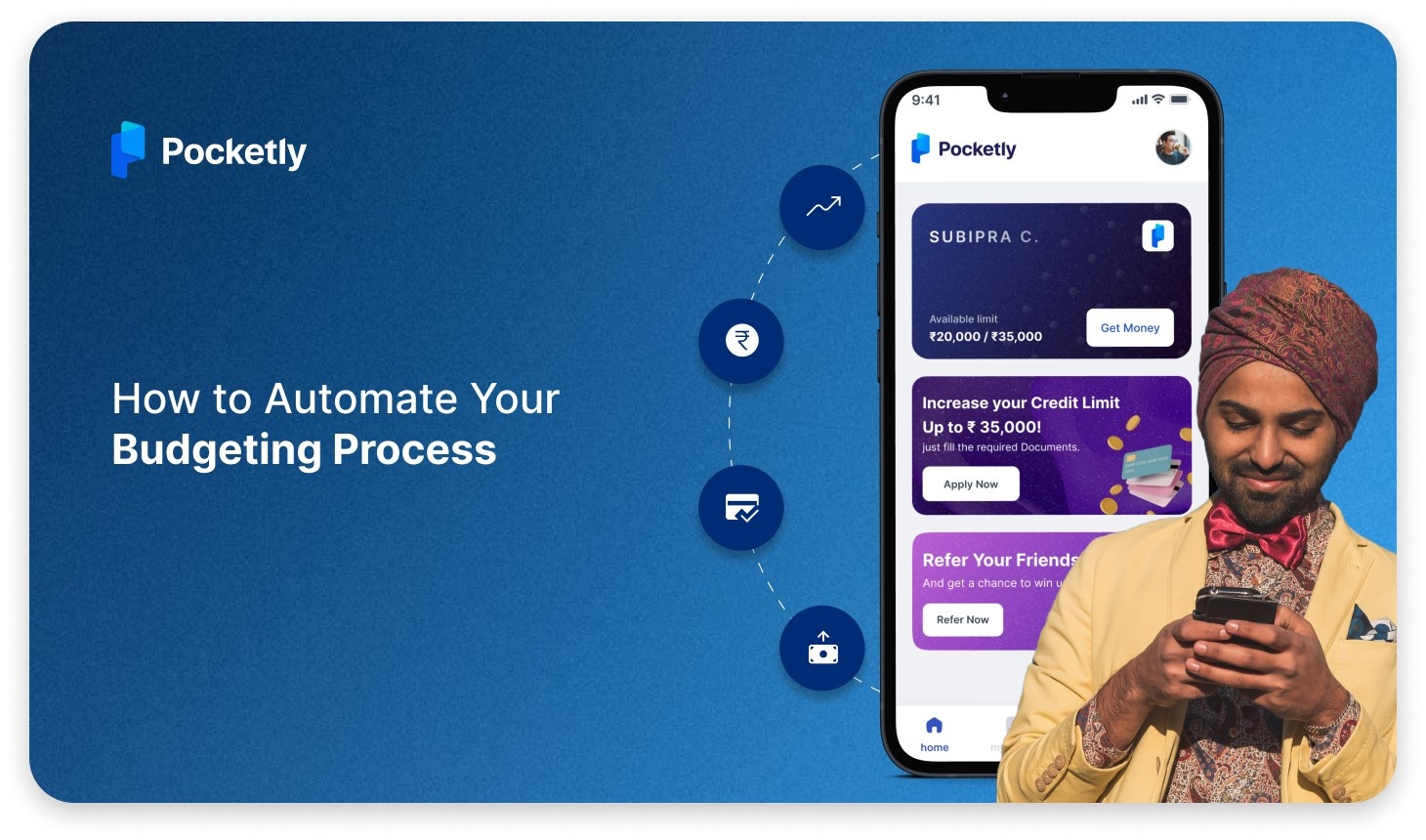
Securing a loan isn’t as simple as submitting an application and waiting for approval. Behind the scenes, lenders carefully assess your financial health, repayment ability, and risk factors before deciding whether to lend you money. That said, have you ever wondered why some loans get approved instantly while others take time or even get rejected? That’s where loan underwriting comes in.
Whether you’re applying for a personal loan, home loan, or business loan, understanding how underwriting works can help you prepare better, avoid delays, and improve your approval chances.
In this guide, we’ll break down what loan underwriting means, the steps involved, and key factors lenders consider so you can navigate the process with confidence.
What is Loan Underwriting?
Loan underwriting is the process lenders use to evaluate your financial health before approving a loan. It’s how they determine whether you can comfortably repay the amount you’re borrowing. This involves checking your credit history, income, existing debts, and overall financial stability to assess the risk of lending to you.
Every loan—whether it’s a personal loan, mortgage, auto loan, or business loan—goes through underwriting to ensure the lender isn’t taking on too much risk. For borrowers, this step is just as important because it influences the loan amount, interest rate, and repayment terms you’ll be offered.
Purpose of Loan Underwriting
The underwriting process isn’t just about approving or rejecting a loan—it plays a crucial role in ensuring responsible lending and protecting both the borrower and lender.
- Determining loan eligibility – Lenders assess whether you can be eligible for the loan based on your income, credit score, and financial obligations.
- Setting the right interest rate – Your financial profile determines whether you qualify for lower interest rates or need to pay a higher rate due to increased risk.
- Preventing loan defaults – Underwriting helps lenders approve loans only for those who have a reasonable ability to repay, reducing the chances of missed payments or defaults.
- Ensuring fair and transparent lending – The process ensures loans are granted based on financial merit rather than bias, making lending practices fair for all applicants.
- Compliance with regulations – Lenders must follow legal and regulatory guidelines to ensure ethical lending and prevent fraud or financial mismanagement.
Understanding how loan underwriting works allows borrowers to better prepare their applications, improve approval chances, and secure better loan terms.
Types of Loan Underwriting Processes
The underwriting process plays a crucial role in determining whether a loan gets approved and under what terms. Lenders use different methods to assess risk, depending on the complexity of the borrower’s financial situation. Some loans are evaluated quickly through automated systems, while others require manual review for a more detailed assessment.
1. Automated Underwriting
What It Is
Automated underwriting is a technology-driven process where loan applications are evaluated using AI, machine learning, and algorithms. Lenders use software to analyse an applicant’s credit history, income, debt-to-income ratio, and other financial factors to make quick approval decisions.
How It Works
- The applicant submits their loan application online or at a bank.
- The system instantly retrieves credit scores, bank statements, and financial details.
- A risk assessment algorithm determines whether the loan should be approved, rejected, or reviewed further.
Benefits
- Faster approvals, often within minutes.
- Minimises human errors and biases in decision-making.
- Suitable for borrowers with strong credit histories and straightforward financial situations.
Example: Online lenders and banks often use automated underwriting for personal loans, car loans, and mortgages where applicants have standard financial profiles.
2. Manual Underwriting
What It Is
Manual underwriting is a human-led evaluation process where a loan officer thoroughly reviews an applicant’s financial details. This method is used when a borrower has a complex financial situation that an automated system might not fully understand.
How It Works
- A loan officer reviews bank statements, employment details, income stability, and past repayment behaviour.
- If credit history is weak, alternative financial proofs (such as savings habits or rental payment history) may be considered.
- The underwriter manually assesses the borrower’s ability to repay before making a final loan decision.
Benefits
- More flexible for applicants with non-traditional income sources or limited credit history.
- Allows lenders to consider additional factors that automated systems might overlook.
- Suitable for self-employed individuals, freelancers, or those with unique financial backgrounds.
Example: A self-employed professional applying for a home loan without a fixed monthly salary may undergo manual underwriting to assess overall financial stability beyond a traditional payslip.
Choosing Between Automated and Manual Underwriting
The method used depends on the type of loan, the borrower's financial profile, and lender preferences.
- Automated underwriting is ideal for those with strong credit, steady employment, and simple financial situations, offering fast approvals and minimal paperwork.
- Manual underwriting is best for borrowers with irregular income, complex financial records, or limited credit history, as it allows a more detailed financial evaluation.
Both approaches aim to ensure fair, responsible lending while minimising risks for both borrowers and lenders.
Steps Involved in the Credit Underwriting Process
Getting a loan isn’t just about applying and waiting for approval—it goes through a structured evaluation called credit underwriting. This process helps lenders decide if a borrower can comfortably repay the loan without financial loss. It also determines the loan amount, interest rate, and repayment terms based on the borrower’s financial health.
Here’s a breakdown of the key steps lenders follow during underwriting.
1. Reviewing Basic Eligibility and Documents
The first step is checking whether the applicant meets the lender’s basic criteria. This includes:
- Verifying identity and address through documents like Aadhaar, PAN, or passport.
- Checking income details through salary slips, bank statements, or ITRs.
- Ensuring the applicant meets minimum income, employment stability, and age requirements.
If any document is missing or incorrect, it can delay or even reject the loan application.
2. Checking Credit History
Lenders check an applicant’s credit history to understand their repayment habits. They look at:
- Credit score (usually from CIBIL or Experian) to assess financial responsibility.
- Past loan and credit card payments, checking for delays or defaults.
- How much credit the borrower is already using compared to their available limit.
A high credit score (750 and above) improves approval chances, while a lower score may result in higher interest rates or loan rejection.
3. Verifying Income and Employment Stability
A steady income reassures lenders that a borrower can handle monthly repayments. They evaluate:
- Salary slips, tax returns, or business income records to confirm income stability.
- The employer’s reputation and job stability for salaried applicants.
- Business performance and revenue trends for self-employed individuals.
Applicants with frequent job changes or inconsistent income may need additional proof to strengthen their application.
4. Evaluating Debt-to-Income (DTI) Ratio
Lenders compare the borrower’s total monthly debt payments to their income to assess repayment ability.
- A low DTI ratio (below 40%) indicates a manageable financial load.
- A higher ratio suggests that a borrower might struggle with additional debt.
For example, if someone earns ₹50,000 per month and has ₹15,000 in debt payments, their DTI ratio is 30%, which is considered favourable.
5. Assessing Collateral for Secured Loans
If the loan requires collateral (like home or car loans), lenders evaluate its value to ensure it covers the loan amount.
- For home loans, the property is assessed based on market value.
- For auto loans, the lender checks the resale value of the car.
- For gold or fixed deposit-backed loans, lenders verify the asset’s worth.
The higher the collateral value, the better the loan terms—such as lower interest rates or higher loan amounts.
6. Final Decision and Loan Approval
After assessing all factors, the lender decides whether to:
- Approve the loan as requested.
- Modify the terms, such as reducing the loan amount or adjusting the interest rate.
- Reject the application if the borrower doesn’t meet the required financial criteria.
If approved, the borrower receives a sanction letter detailing the loan amount, tenure, interest rate, and repayment structure.
And if you want quick financial support, Pocketly will make sure you are in good hands for more details read our guide on, Instant Quick Cash Loan in 1 Hour.
How Long Does It Take to Underwrite a Loan?
The time required for loan underwriting varies based on the type of loan, the lender’s internal process, and the applicant’s financial profile. While some loans, like instant personal loans or credit card approvals, may be underwritten within minutes through automated systems, others, such as home or business loans, can take days or even weeks due to the detailed verification involved.
In most cases, underwriting involves reviewing credit history, income stability, debt obligations, and collateral (for secured loans) before making a final decision. A straightforward application with a high credit score and stable income is likely to be processed faster than one requiring additional verification or manual evaluation.
Factors Affecting Underwriting Duration
- Type of Loan – Personal loans and credit cards typically go through faster underwriting than home or business loans, which require more detailed evaluation.
- Automated vs Manual Underwriting – Lenders using AI-driven automated underwriting can approve loans within 24-48 hours, while manual underwriting may take a few days to a few weeks.
- Applicant’s Financial Profile – Borrowers with a high credit score, stable income, and minimal debt often experience quicker approvals. Those with complex financial situations (e.g., self-employed, irregular income, or past defaults) may need additional verification, leading to delays.
- Collateral Evaluation (For Secured Loans) – If the loan requires property, vehicle, or asset verification, the underwriting process may take longer due to the need for market assessments and legal checks.
- Lender’s Internal Processing Speed – Some financial institutions have efficient systems that complete underwriting in a day or two, while others may take longer due to manual reviews and paperwork processing.
For faster loan underwriting, keeping documents ready, maintaining a good credit score, and choosing lenders with automated systems might help speed up the process.
Ensuring a Smooth Underwriting Process
The loan underwriting process can be quick and hassle-free if borrowers take the right steps. Delays often occur due to incomplete documentation, low credit scores, or additional verification requirements. Being well-prepared can help streamline the process and improve approval chances.
- Provide Accurate and Complete Documentation – Ensure all required documents, such as ID proof, income statements, and bank records, are submitted correctly to avoid unnecessary delays.
- Maintain a Good Credit Score – A strong credit score of 750 or above increases approval chances and speeds up the underwriting process.
- Keep Your Debt-to-Income Ratio Low – Ensure your monthly debt obligations do not exceed 40% of your income for a smoother approval.
- Choose a Lender with Automated Underwriting – Lenders that use AI-driven underwriting systems process loans faster than those relying on manual verification.
- Respond Quickly to Lender Requests – If the lender requires additional information or clarifications, responding promptly can prevent delays.
- Ensure Stability in Employment and Income – Lenders prefer borrowers with consistent employment history and stable income sources.
- Double-Check Application Details – Even small errors in personal or financial details can lead to delays or rejections.
By preparing in advance and following these steps, borrowers can avoid unnecessary setbacks and ensure a smooth underwriting experience.
Handling unexpected expenses can be stressful, but getting a personal loan shouldn’t be. Whether you need quick cash or a flexible borrowing option, Pocketly makes the process fast, hassle-free, and completely transparent—so you can focus on what matters most.
Why Choose Pocketly for a Seamless Borrowing Experience?
- Instant Approvals and Quick Disbursal – Get loan approvals in minutes and access funds without long waiting times.
- Flexible Loan Amounts – Borrow as little as ₹1,000 for small expenses or up to ₹25,000 for bigger financial needs.
- Minimal Documentation – No complicated paperwork, just the essential documents for a smooth and quick process.
- Complete Transparency – Know your interest rates and fees upfront—no hidden charges or last-minute surprises.
- Credit-Friendly Approach – Even if your credit score isn’t perfect, Pocketly offers accessible loan options.
- Flexible Repayment Plans – Choose repayment schedules that work for you, making loan management stress-free.
With Pocketly, you get a streamlined underwriting process and a borrowing experience that’s simple, fast, and transparent.
Conclusion
Loan underwriting plays a crucial role in determining loan approvals, interest rates, and repayment terms, making it one of the most important steps in securing a loan. Understanding how the process works can help you prepare better, avoid unnecessary delays, and improve your chances of approval. Whether it’s your credit score, income stability, or debt-to-income ratio, every detail matters.
If you’re looking for a fast, transparent, and hassle-free loan process, Pocketly has you covered. With instant approvals, minimal documentation, and flexible repayment options, borrowing money has never been easier.
Download the Pocketly app today and experience quick, stress-free loan approvals!
FAQs
What is loan underwriting?
Loan underwriting is the process lenders use to assess a borrower's creditworthiness before approving a loan. It involves evaluating income, credit history, assets, debt, and the ability to repay the loan.
What are the main types of loan underwriting?
There are three main types:
- Automated underwriting – Uses algorithms and data analysis for quick approvals.
- Manual underwriting – A human underwriter reviews financial documents for complex cases.
- Hybrid underwriting – Combines automated and manual review for a balanced assessment.
How fast can I get the loan?
Approval takes just a few minutes, and funds are transferred to your bank account shortly after. Pocketly makes sure you get a quick and seamless process.
What documents are needed?
Only basic KYC documents—PAN card, Aadhaar card, and bank statement—all uploaded online. You don’t need to deal with any physical paperwork.
Do I need a credit score?
No credit score is required. Pocketly welcomes first-time borrowers, too. It’s designed for everyone, including those new to credit.
What are the repayment options?
Flexible EMIs allow you to choose a repayment plan that fits your budget. You’ll have complete control over how you repay.

















